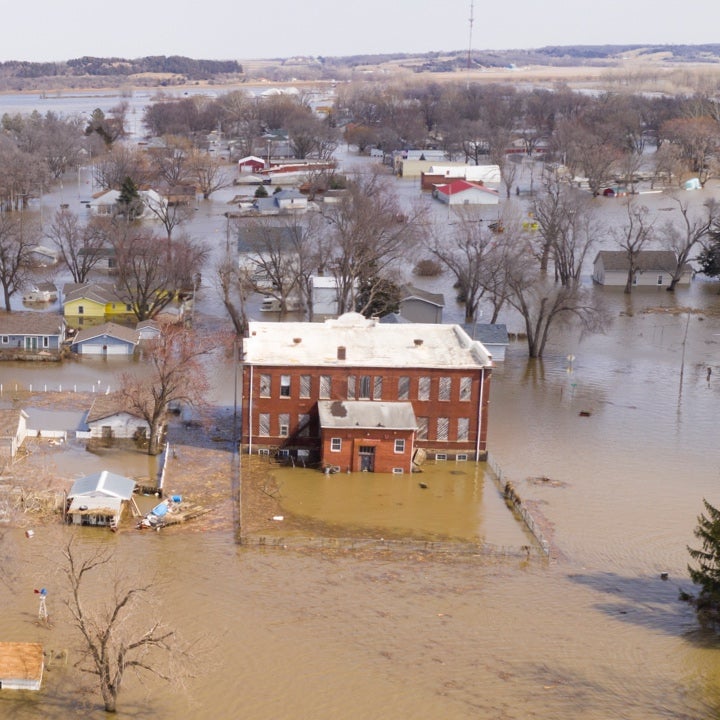Surveys suggest that 91 percent of American homeowners purchase insurance, but when it comes to flood risk the story could not be more different. Flooding is not covered in standard homeowner or renter policies, and the take-up of flood-specific coverage for homeowners is estimated to be around 15 percent – even though flood is a prevalent, nationwide peril. In the last decade, 98 percent of U.S. counties have been affected by flooding. According to the National Flood Insurance Program (NFIP), about 90 percent of natural disasters in the U.S. involve flooding. So, why is insurance take-up so low, and how can the market support change?
There are many factors to consider: poor communication of risk, a general misunderstanding of the risk, and acknowledging the risk but considering protection too expensive and difficult to justify. Today, homeowners base risk decisions on whether their property is in or out of a FEMA Special Flood Hazard Area (SFHA) to ascertain whether it is flooded or not. Even when a property is within an SFHA zone (areas with a greater than one percent annual probability of flooding), only one-third of homeowners hold policies, despite mandatory coverage for the first year of a mortgage term. This low penetration illustrates that policies are rarely renewed when no longer required by law.
The SFHA “in-or-out” view is also misleading. According to RMS® analysis, the depth of flooding can vary significantly within FEMA flood zones. Examining properties in SFHAs in a single Houston postcode showed that flood depth can vary from no flooding to greater than 12 feet of flooding.
Outside of the SFHAs, homeowners may believe they are safe inland, away from rivers and associated flood risk from large storms like Hurricane Harvey (2017). This designation of the 100-year zone has likely contributed to a lower perceived value of flood insurance for those outside of this classification, providing even less reason to purchase. But this spatial variability of flooding exists in areas outside of SFHAs, traditionally thought to be low risk. Significant losses continue to occur: Hurricane Harvey saw upward of 75 percent of claims arise from properties classified as outside SFHAs, as did Hurricane Michael (2018).
Accommodating Mitigation in Flood Risk Assessment
Affordability is a thornier subject. The average flood insurance premium in 2018 was $642, which might appear expensive. However, with an average paid flood claim of $42,500, a single flood throughout the lifetime of a standard 30-year mortgage could justify flood insurance purchase.
A homeowner’s individual property characteristics may also mitigate or exacerbate the risk, enabling variation to legacy rating approaches and, in some instances, making insurance more affordable. A key component of a property’s risk of flooding is not only the frequency but also the severity of the floods. For example, when exposed to the same hazard, the presence of a basement or an elevated first-floor height can determine if a location experiences no loss or significant loss. An assessment of a single property suggests that the expected loss to a structure exposed to moderate flooding can vary by as much as 325 times, depending on a property’s characteristics.
To put this into context, a property exposed to the same level of moderate flooding could incur a loss of $100 or $32,500, dependent on information that is often already captured and can be considered in today’s solutions. Both examples highlight that the level of complexity goes beyond a simple “in-or-out” assessment.
Time for Change
The protection gap remains, and the risk of flooding is widespread, which continues to be poorly communicated and misunderstood. However, things are changing. A plethora of solutions from private companies are becoming available to better assess flood risk, though few provide a means to translate the rich building data collected today into a location-level rate.
We should acknowledge that FEMA is introducing Risk Rating 2.0, which is due to go into effect nationwide in October 2021. This initiative will go some way to addressing this problem by introducing fairer and simpler rates, and it will provide a long-anticipated update to a methodology that remains largely unchanged since the 1970s. A private flood market is also emerging, albeit slower than might have been predicted a few years ago.
There is a long road ahead before the availability of flood insurance is commonplace in homeowner and renter policies, but there are signs of progress. The NFIP, which currently provides the lion’s share of minimal coverage, earns about $3.5 billion in written premium per annum. With the risk comes a significant opportunity – estimated by some as up to $40 billion – and that risk is becoming increasingly better understood.
Access to RMS models and data provide solutions that can help insurers feel comfortable in making coverage more accessible. Simultaneously, repeat events are helping homeowners and renters understand the need for coverage. If both the market and the homeowner are better informed, there is hope that this protection gap can be progressively narrowed.







